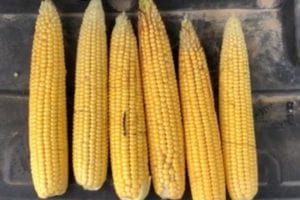Does plant population matter?
Maximizing corn yield requires a combination of sound management, good agricultural practices, and help from Mother Nature (environmental factors). Soil health and fertility; Hybrid selection; Proper planting; Weather; and Weed, Insect and Disease control all play a critical role. Some of these are controllable others are not.
A recent article I read compared the characteristics and management practices of the top performers in the NCGA yield contest. According to the article, these farmers not only have produced yields much higher than the current U.S. average, but they have also achieved a higher rate of yield gain over time.
Over the past 20 years, U.S. corn yields have increased at a rate of 1.9 bushels/acre/year while winning yields in the non-irrigated yield contest classes have increased by 4.6 bushels/acre/per year. During the same period Knox County corn yields have increased by about 1.8 bushels/acre/year.
Why are we lagging behind? Yes, I know that only the best ground is entered into these contests, and this ground may sometimes receive different levels of inputs. But … with our resources in Knox County, shouldn’t we be able to do better, at least surpass the U.S. rate of 1.9 bushels/per acre/year?
Fields entered into this contest are planted with the same corn hybrids available to everyone and at least regionally, subject to the same growing conditions. This suggests that management practices could be playing a key role in yield potential.
The management practice I want to focus on today is plant population.
Does plant population matter??
A key factor in achieving maximum corn yield is establishing an adequate population density to allow a hybrid to maximize its yield potential. Due to improved genetics, many of today’s hybrids can be planted at higher populations.
Harvest populations in national corn yield contest entries over 300 bushels/acre from 2020 through 2024 are shown in the chart below.

The average contest harvest population over this period was 35,400 plants/acre. The U.S. average during the same time period was 29,200 plants/acre and the Ohio average during this period was 30,080 plants/per acre.
Yes, seed costs are increasing. While I’m not trying to sell seed, does this data suggest that we should we be adjusting our corn population rates … or at least considering it?
The bottom line is – You know your fields’ yield potential! As a manager are you giving each field the inputs and management it needs to achieve its maximum potential?


 Corn
Corn



 Scouting
Scouting


 According to the latest Ohio Crop Weather Report 90% of the Ohio corn crop is in the dough stage, 3 percentage points ahead of the 5-year average. 40% of the crop is in the dent stage 10% below the 5 year average.
According to the latest Ohio Crop Weather Report 90% of the Ohio corn crop is in the dough stage, 3 percentage points ahead of the 5-year average. 40% of the crop is in the dent stage 10% below the 5 year average.